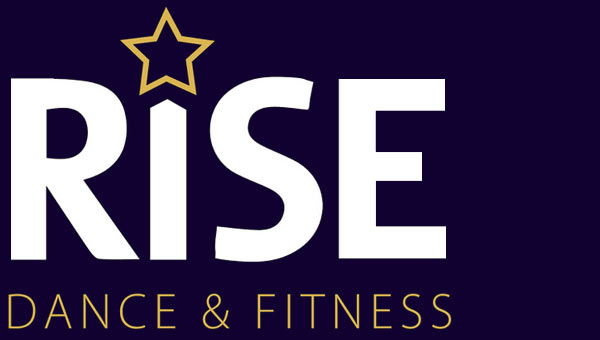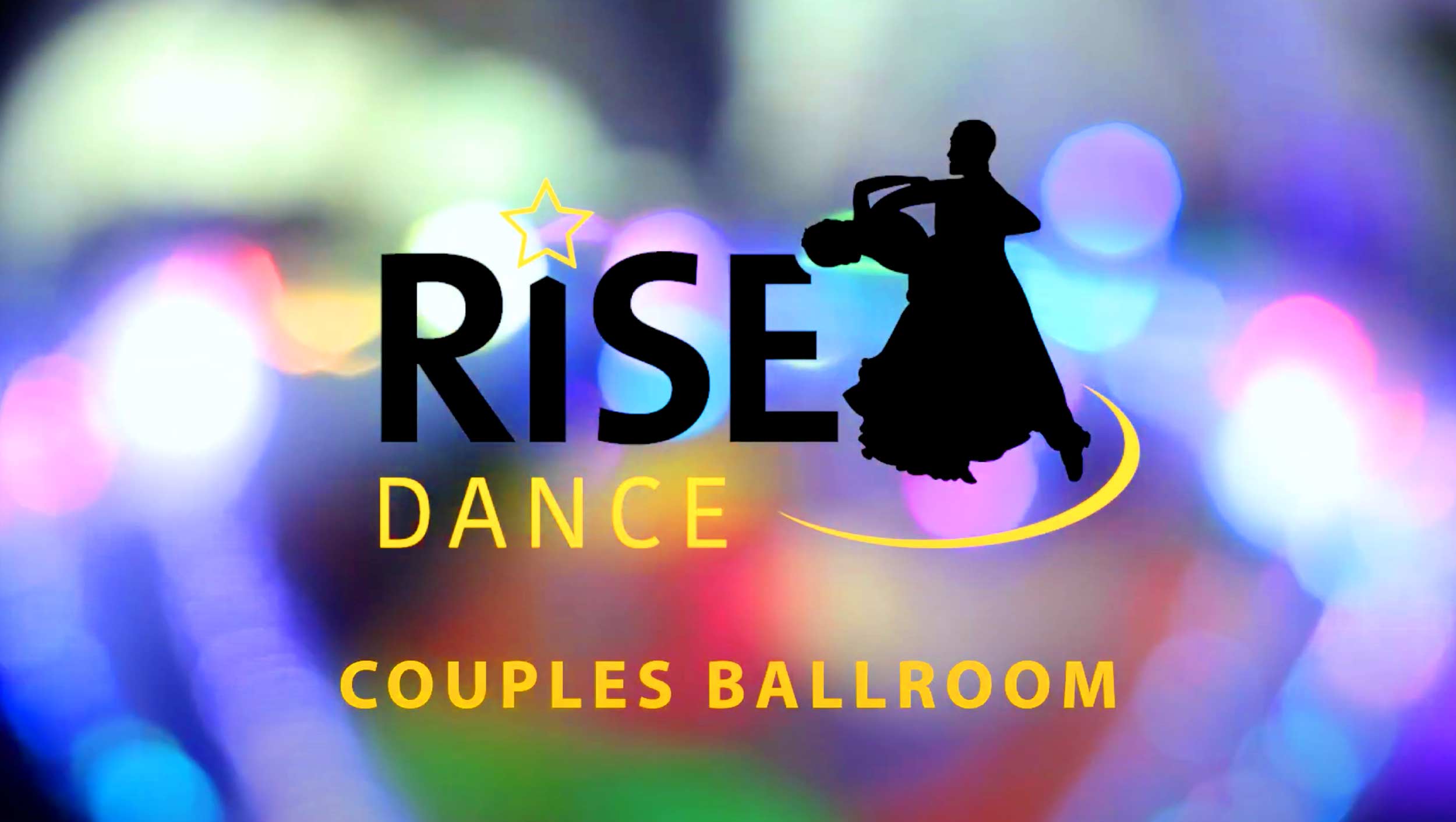Unleash your inner dance duo with our partner Ballroom dance lessons in Leeds
A Guide to Ballroom Dancing
We are sure you have come across examples of Ballroom Dancing, either in person or on TV. Recently, the popularity of Ballroom Dancing has grown more than ever due to TV shows such as Strictly Come Dancing and Dancing with the Stars. This exciting and ever-evolving dance style has taken the nation by storm, and its popularity shows no sign of stopping!
In this guide, we will share with you everything you need to know about Ballroom Dancing and how RISE Dance can set you on course for Ballroom mastery!
What is Ballroom Dancing?

Ballroom Dancing has earned its name due to its origination in ballrooms! It is a partner dance style known for both competitive dancing and social enjoyment. There are five different styles within the genre of Ballroom Dancing. They are Waltz, Tango, Foxtrot, Quickstep, and Viennese Waltz. Here, we will describe these styles in more detail to help you get to know them better.
Waltz
The Waltz is the perfect place to start, as it is often known as the first of the Ballroom Dancing styles. It is frequently the first dance performed at both competitions and social dancing events.
The Waltz is a slow dance, sometimes referred to as the Slow Waltz or the English Waltz. Its name originates from the German word “Walzen,” which means to roll, glide, or turn. The origins of the Waltz trace back to the 17th century in Vienna, Austria. In the early 19th century, it was introduced and subsequently developed in London. When it was first introduced, it was frowned upon because of how close the couples were dancing, but it eventually became accepted.
The Waltz is characterized by its ¾ time signature and a strong accent on the first beat of each bar of music. Its most popular features are the rise and fall of the footwork and the heavy emphasis on rotation. It has an elegant swing and sway feeling as it glides along the floor.
The Waltz is the perfect style to warm up with and get into the Ballroom mood. The slow tempo and simple box movement make it a great place for beginners to start. This is why our beginner classes often start with the Waltz as one of their first dances!

Tango
For a higher intensity and more passionate dance, look no further than the Tango. The Tango originated in the late 1800s in Buenos Aires, Argentina. It also has influences from European and African cultures.
The Tango is commonly known for its feisty nature and is very popular with both beginners and advanced dancers.
The Tango has a 2/4 time signature, meaning there are only two beats in each bar of music. It is recognized for its alternation between staccato and legato rhythms, providing a mixture of sharp and smooth movements. Unlike the Waltz, the Tango has no rise or fall with the feet, so it is danced on one level.
Many beginners find the Tango one of the easiest and most fun dances to learn due to its clear and simple steps and the exciting music that accompanies it.

Foxtrot
Arguably one of the most popular Ballroom dances is the Foxtrot. Many describe this dance as being synonymous with the era of Fred Astaire and Ginger Rogers. It is commonly danced to Jazz and Swing music from artists like Fred Astaire to more recent singers like Michael Bublé.
Originally developed in the 1910s and influenced by actor Harry Fox, the Foxtrot is a smooth, progressive dance characterized by long, linear, flowing movements. As it grew in popularity, it became split into two versions: the Slow Foxtrot and the Quickstep.
The Foxtrot is sometimes described as a “walking dance” with its interchange between slow and fast walking steps. The time signature is 4/4, meaning there are four beats in every bar of music. However, it is easier and more popular to count this dance using “slows and quicks” rather than numbers.
As our beginners’ progress, we teach them how to refine the simple walking steps into the classy, smooth style of the Slow Foxtrot.

Quickstep
The Quickstep was originally developed in the 1920s in New York and was first performed by dancers from the Caribbean and Africa. Its origins are a combination of the Slow Foxtrot and the Charleston. The most common figures of the Quickstep are the Chassé and the Lockstep. Over time, the Quickstep has developed from a compact dance to the modern version that progresses and advances around the dance floor.
Like the Foxtrot, the time signature is 4/4, and this dance is also counted using “slows and quicks” rather than numbers.
Viennese Waltz
The Viennese Waltz was developed in the 18th century in Vienna, Austria, and is the oldest of all the Ballroom dances. Originally, the Viennese Waltz was danced in a more open hold, with the ladies holding onto their skirts, which is different from the fully closed hold style we see today.
Despite using the same time signature, in contrast to the English Waltz, the Viennese Waltz is significantly faster. It is based around simple step patterns that constantly rotate and switch between clockwise and counter-clockwise directions.
How can I get started?
The best way to get started in Ballroom Dancing is to join a beginner’s class.
Here at RISE Dance, we have new classes starting regularly, allowing all our beginners to start at the same time. Our partner classes run in four-week blocks, designed to help everyone progress together over time.
The class will cover eight main Ballroom and Latin dances, including Waltz, Tango, Foxtrot, Quickstep, Cha Cha, Samba, Rumba, and Rock n Roll/Jive. You’ll learn basic steps that will fit together to form simple routines. Over time, these routines will progress in difficulty as your skills increase.
We teach our classes at a pace suitable for beginners, helping build confidence without judgment of your dancing level or proficiency.
In a beginner’s class, you’ll be surprised at how quickly you can take to the floor. You’ll learn a bit of each style and find your favourite while enjoying the variety of music in each dance.
As you advance, or if you are already proficient in Ballroom dancing, we offer Improver, Intermediate, and Advanced Ballroom and Latin classes. These classes delve into more advanced techniques for the dance styles you have learned. Our experienced instructors will guide you from novice to pro through well-structured classes. If you wish to specialize in a specific style, we regularly hold masterclasses focused on individual styles. You can also sign up for private tuition to boost your dancing proficiency and ability.
What else do i need to know
Once you’re signed up for a class, what do you need to know to prepare for your first session?
First of all, wear appropriate clothing and footwear for dancing. Make sure to wear comfortable shoes that fit securely and do not have too much grip. Plimsolls, for example, are fine to start with. We do not recommend sandals or flip-flops as they can easily fall off when dancing. If you decide later that you would like to invest in dance shoes, a member of our team can advise you. Formal ballroom shoes are not necessary at the beginner stage.
As for clothing, choose something you are comfortable in and can move freely in; loose clothing or sportswear is ideal.
There is no need to buy anything specific for the class, and formal ballroom attire is not required. Many couples enjoy dressing up for our social events, but specific dancewear is never necessary at a social level.

